Nomex 410 is a family of insulation papers that offer high inherent dielectric strength, mechanical toughness, flexibility and resilience. Nomex 410, the original form of Nomex paper, is widely used in a majority of electrical equipment applications. Available in 11 thicknesses ranging from 0.05 mm to 0.76 mm (2 mil to 30 mil), Nomex 410 is used in almost every known electrical sheet insulation application.
Electrical Properties
The typical electrical property values for Nomex 410 are shown in Table I. The AC Rapid Rise dielectric strength data in Table I represent voltage stress levels withstood for 10 to 20 seconds at a frequency of 60 Hz. These values differ from long-term strength potential. DuPont recommends that continuous stresses inransformers designed with Nomex 410 not exceed 40 V/mil (1.6 kV/mm) to help minimize the risk of partial discharges. The full wave impulse dielectric strength data shown in Table I are based on multiple sheets. These values are appropriate for applications that employ these materials in such configurations. Data based on single sheets of material are available upon request.
The geometry of the system has an effect on the actual impulse strength values of the material. The dielectric strength data are typical values and not recommended for design purposes. Design values can be supplied upon request.
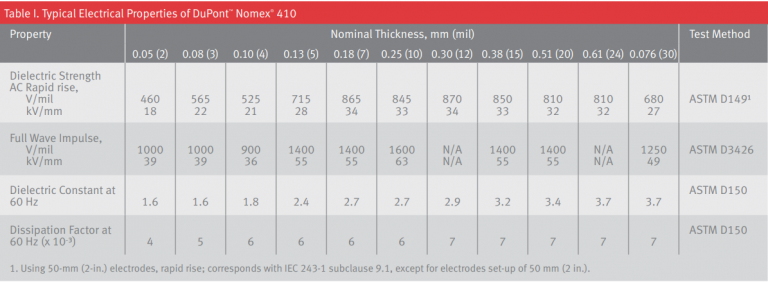
Temperature has a minor effect on 410 — 0.25 mm (10 mil) dielectric strength and dielectric constant, as shown in Figure 1.

Variations in frequency up to 104 Hz have essentially no effect on the dielectric constant of Nomex 410. The effects of temperature and frequency on dissipation factor of dry Nomex 410 — 0.25 mm (10 mil) paper are shown in Figure 2. The 60 Hz dissipation factors of thinner papers are essentially the same as those for 0.25 mm (10 mil) at temperatures up to 200°C. At higher temperatures and frequencies, the thicker papers have somewhat higher dissipation factors than those shown for 0.25 mm (10 mil) paper
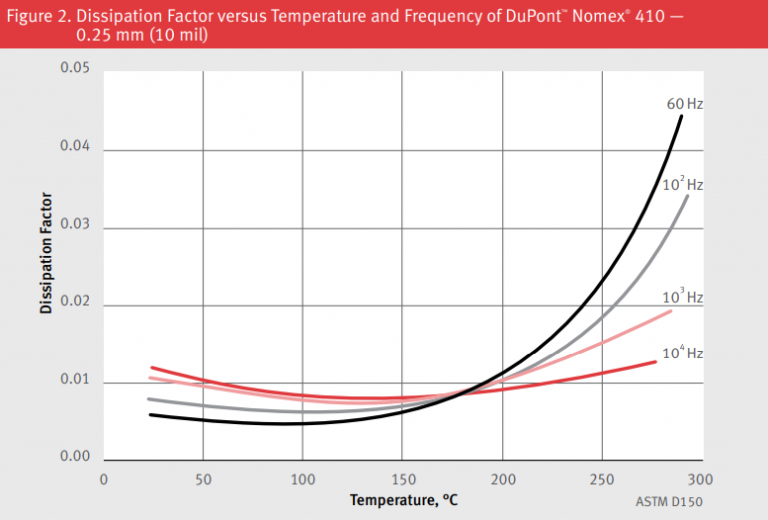
Surface and volume resistivities of dry Nomex 410 — 0.25 mm (10 mil) paper are shown in Figure 3 as functions of temperature. The corresponding values
for other thicknesses of Nomex 410 are very similar.
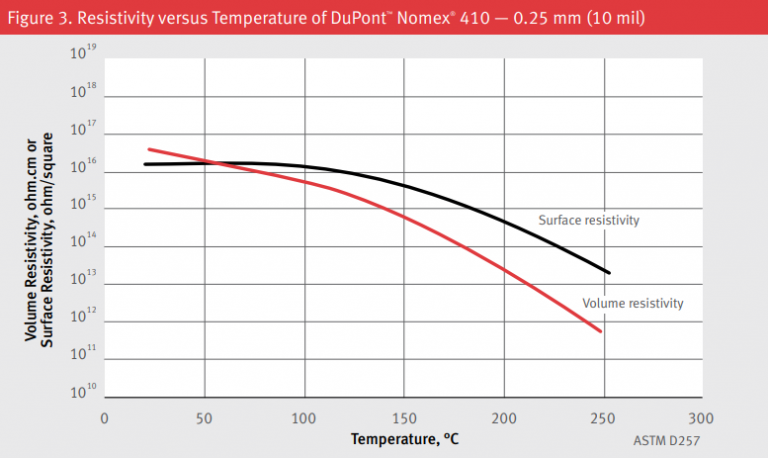
The relatively minor effects of moisture (humidity) on the electrical properties of Nomex 410 — 0.25 mm (10 mil) are shown in Table II.

Like other organic insulating materials, Nomex paper is gradually eroded under attack by partial discharges. Partial discharge intensity is a function of voltage stress, which, in turn, depends almost entirely on design parameters such as spacing between circuit elements, smooth vs. sharp contours, etc. Although corona does not occur during normal operation of properly designed electrical equipment, any device may be subject to occasional overvoltages that produce brief corona discharges; and it is important that the insulation not fail prematurely under these conditions. The voltage endurance (time to failure under corona attack) of Nomex 410 is superior to other commonly used organic insulations and even compares favorably with some inorganic compositions, as shown in Figure 4. These data were obtained in all cases on single layers of 0.25 mm (10 mil) materials at room temperature, 50% relative humidity, and 360 Hz frequency. Times to failure at 50–60 Hz are approximately 6 to 7 times as long as indicated.
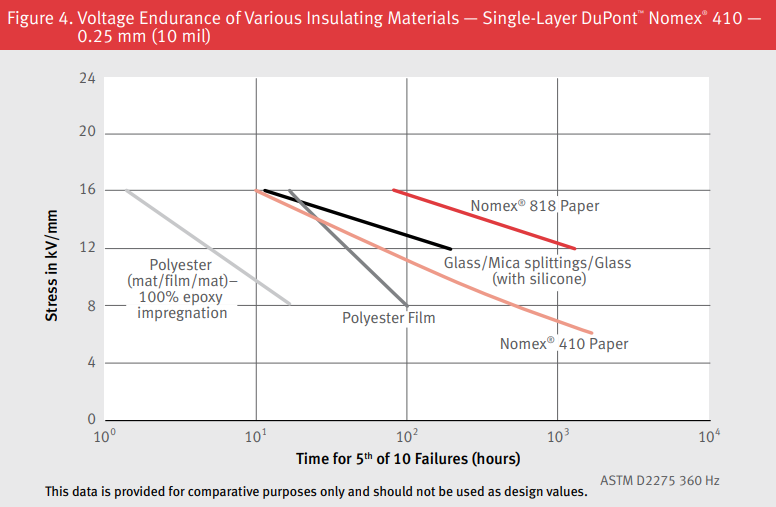
Mechanical Properties
The typical mechanical property values for Nomex 410 are shown in Table III
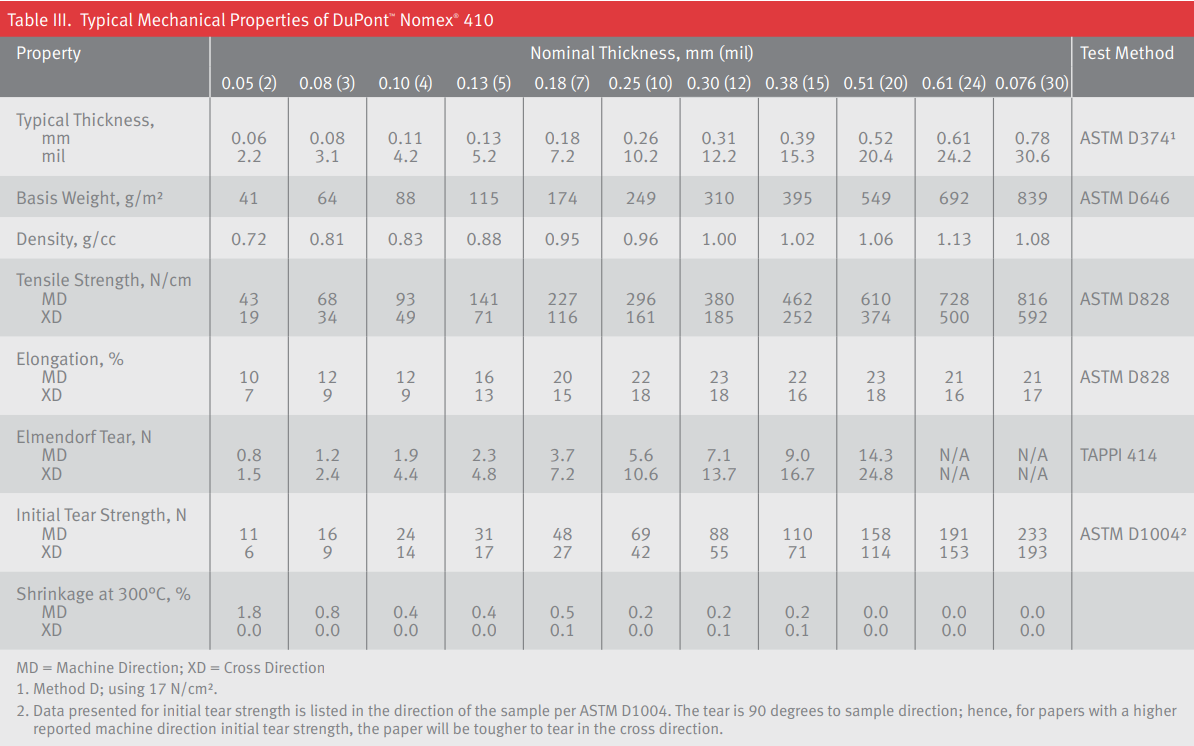
The effects of high temperatures on tensile strength and elongation are illustrated in Figure 5. Nomex sheet structures also retain good mechanical properties at very low temperatures. At the boiling point of liquid nitrogen (minus 196°C or 77 K) the tensile strength of Nomex 410 — 0.25 mm (10 mil) paper exceeds its room temperature value by 30% to 60% (depending on direction), while elongation to break is still greater than 3% (better than most inorganic materials at room temperature). This allows Nomex 410 to work well in cryogenic applications.
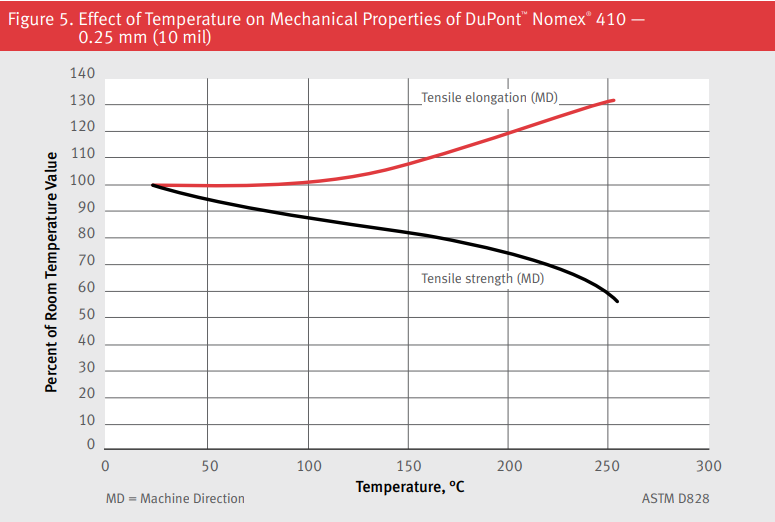
The effects of moisture (humidity) on tensile strength and elongation are shown in Figure 6. Like elongation, the tear strength and toughness of Nomex 410 are also improved at higher moisture contents. The dimensions of bone-dry Nomex 410 exposed to 95% relative humidity (RH) conditions will increase at most 1% in the machine direction and 2% in the cross direction (due to moisture absorption). This swelling is largely reversible when the paper is re-dried. The rate of change in dimensions will depend, of course, on paper thickness and configuration (e.g., individual sheets versus tightly wound rolls). Variations in environmental humidity will usually produce dimensional changes that will be less than 1%.

However, even small dimensional changes especially if they are non-uniform—can cause or accentuate non-flatness (e.g., sag, puckers, etc.) in the sheet, which can cause problems in critical operations like laminating or creping. Therefore, Nomex® paper intended for these applications should be kept sealed in its protective polyethylene wrapper to maintain uniform moisture content until just before use. For more information on the effects of moisture on Nomex® insulation and how to ppropriately protect the rolls, request our moisture brochure.
Thermal Properties
The effects of long-time exposure of Nomex® 410 — 0.25 mm (10 mil) to high temperature on important electrical and mechanical properties are shown in Figures 7 and 8. These Arrhenius plots of aging behavior are the basis for the recognition of Nomex® paper as a 220°C insulation by Underwriters Laboratories and have been utilized for almost 50 years in commercial applications. These curves can also be extrapolated to higher temperatures. Measurements show, for example, that Nomex® 410 will maintain 300 V/mil (12 kV/mm) dielectric strength for several hours at 400°C, which is the performance predicted by the Arrhenius plot.
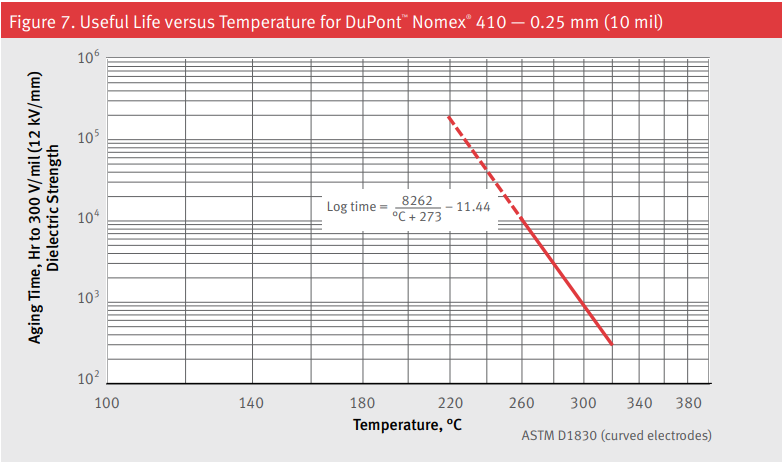
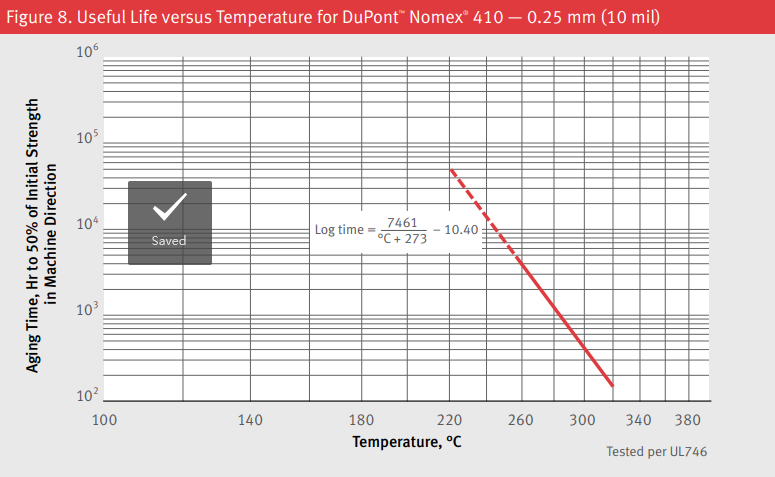
The thermal conductivity of Nomex® 410 – 0.25 mm (10 mil) paper is shown in Figure 9. These values are similar to those for cellulosic papers and, as with most materials, are primarily determined by specific gravity (density). Therefore, thinner grades of Nomex® 410 will have slightly lower conductivity and thicker grades will have higher conductivities, as is seen in Table IV. The total system construction may affect the overall thermal conductivity; therefore, care should be taken in applying individual sheet data to actual situations. For example, two sheet insulations with identical thermal conductivities may have quite different effects on heat transfer from a coil due to the differences in stiffness or winding tension, which affect the spacing between the insulation layers.

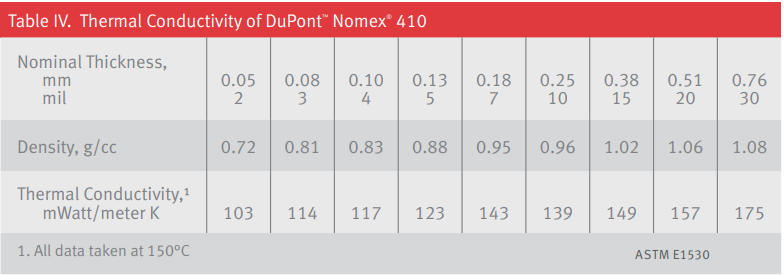
Chemical Stability
The compatibility of Nomex® papers and pressboards with virtually all classes of electrical varnishes and adhesives (polyimides, silicones, epoxies, polyesters, acrylics, phenolics, synthetic rubbers, etc.), as well as with other components of electrical equipment, is demonstrated by the many UL-recognized systems comprising Nomex®, including use in commercial applications for almost 50 years. Nomex® papers are also fully compatible (and in commercial use) with transformer fluids (mineral and silicone oils and other synthetics) and with lubricating oils and refrigerants used in hermetic systems. Common industrial solvents (alcohols, ketones, acetone, toluene, xylene) have a slight softening and swelling effect on Nomex® 410, similar to that of water. These effects are mainly reversible when the solvent is removed.
The Limiting Oxygen Index (LOI) of Nomex® 410 at room temperature ranges between 27% and 32% (depending on thickness and density); at 220°C, it ranges
between 22% and 25%. Materials with LOI above 20.8% (ambient air) will not support combustion. Nomex® 410 must be heated between 240°C and 350°C (again depending on thickness) before its LOI declines below the flammability threshold. The LOI data for Nomex® 410 — 0.25 mm (10 mil) is shown in Figure 10

Radiation Resistance
The effect of 6400 megarads (64 Mgy) of 2 MeV beta radiation on the mechanical and electrical properties of Nomex® 410 is shown in Table V. (By comparison, a laminate of polyester film and polyester mat of the same thickness, 100% epoxy-impregnated, crumbled after 800 megarads, or 8 Mgy). Similar results were obtained on exposure to gamma radiation. The outstanding radiation resistance of Nomex® paper has led to its use in critical control equipment for nuclear power installations

UL Ratings
Table VI shows the UL ratings for Nomex® 410 papers. Descriptions of the numerical values for each of the UL ratings are detailed in the UL website on Component Materials, which can be accessed at
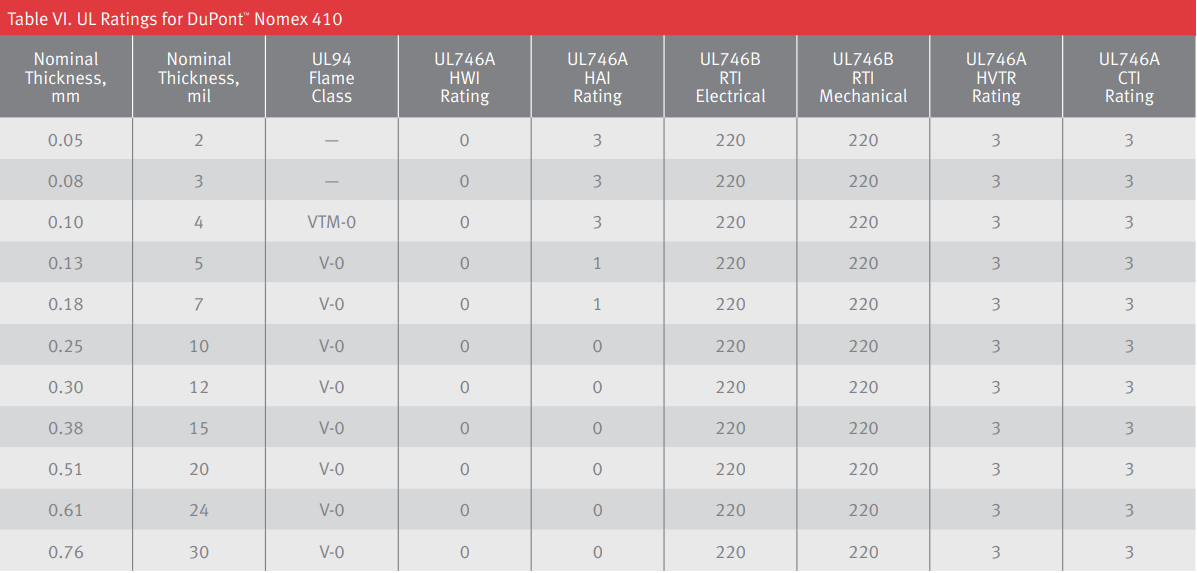


 Tiếng Việt
Tiếng Việt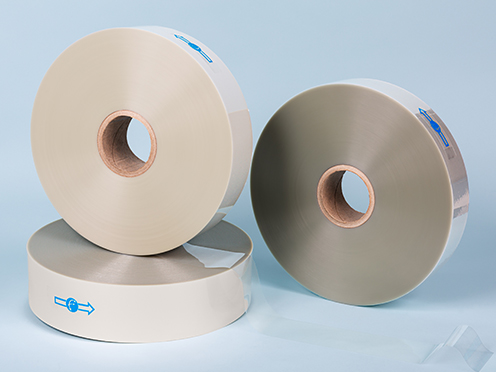
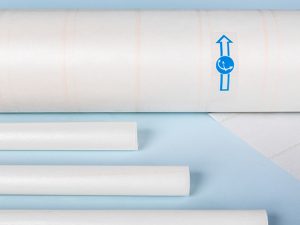





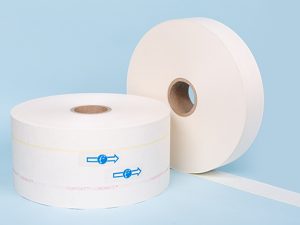
Reviews
There are no reviews yet.